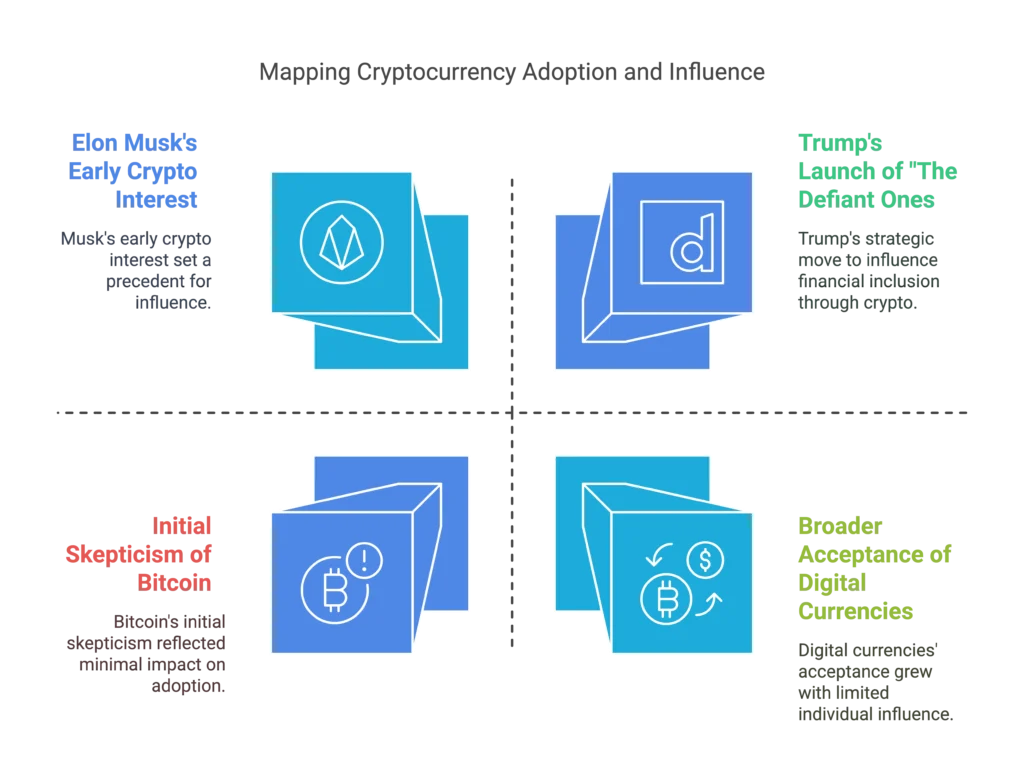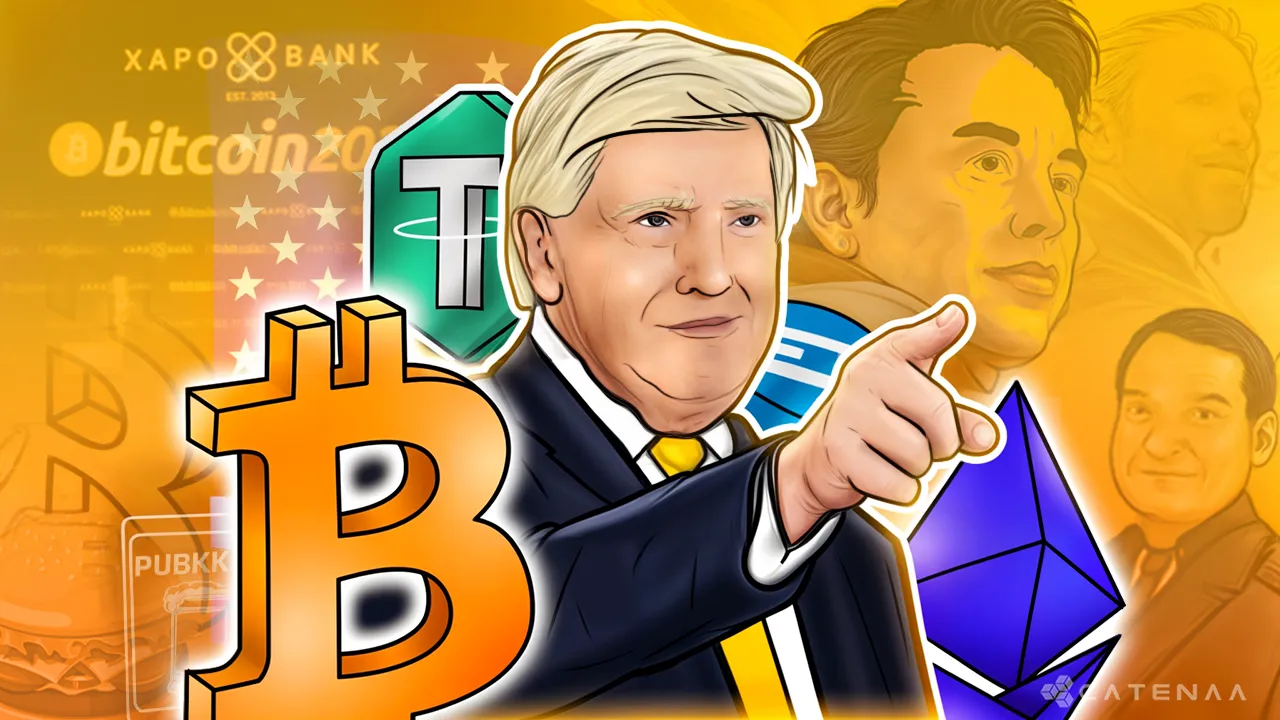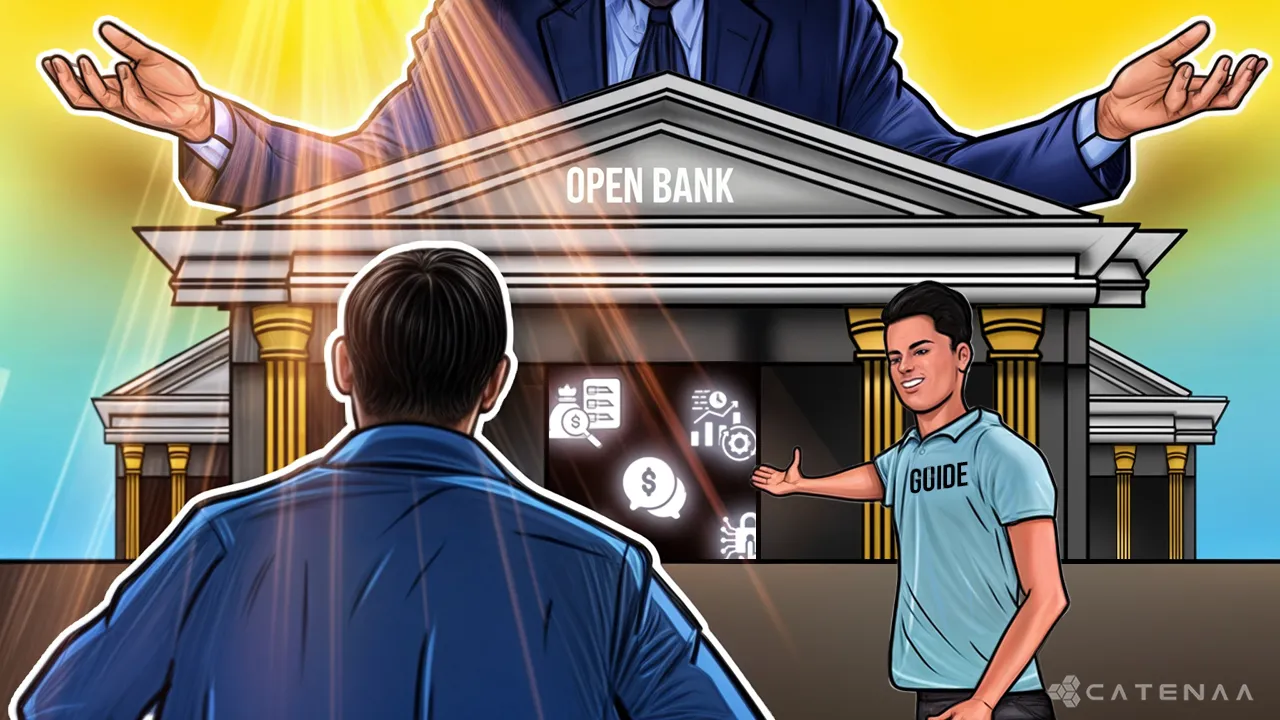Table of Content
President Donald Trump’s Crypto Legacy-From Skeptic to Blockchain Leader
Catenaa, December 28, 2024 – Donald Trump’s name etched in American history for his business empire and political controversies has evolved in many surprising ways. As the 45th President and now positioning himself as the elected 47th of the USA, one of the most striking shifts in recent years has been his stance on cryptocurrency, a space he once despised but now fully embraces.
This turn from skeptic to advocate is not just a matter of financial strategy. It speaks to the core of Trump’s character: his flexibility, his ability to capitalize on trends and his ever-present desire to dominate the stage, no matter the arena.
Early Days of Trump
Born in 1946 in Queens, New York, Donald John Trump grew up under the wing of his father, Fred Trump, a successful real estate developer. From a young age, Trump was exposed to the high stakes of the business world and after studying economics at Wharton, he dove headfirst into expanding the family empire. Turning the Trump Organization into a symbol of wealth and power, his projects like the Trump Tower became synonymous with luxury and ambition.
In the 1980s and 1990s, Trump was the quintessential American Businessman, building casinos, hotels and skyscrapers. His ventures in Atlantic City, the Plaza Hotel and his turn as the host of “The Apprentice” cemented his celebrity persona. However, not all of his endeavors during this period were successful. Failed businesses like Trump University and other ventures showed that his rise was not without significant setbacks.
Throughout his business career, Trump clung to traditional markets, preferring assets like real estate over the uncertain, digital modes of finance. It wasn’t until much later that Trump would leap into the world of cryptocurrency, a move that mirrors his later-life entry into politics.
Initial Criticism
By 2019, cryptocurrencies like Bitcoin dominated financial headlines, with early adopters reaping massive rewards. But Trump remained skeptical. His public statements at the time painted a picture of a man uncomfortable with digital assets’ volatility and lack of understanding.
He famously posted on X (formerly Twitter) in July 2019 that Bitcoin was “highly volatile” and based on “thin air,” warning of its potential use in illicit activities. To Trump, a businessman who had built his fortune on tangible assets like gold, land and buildings, Bitcoin and its ilk seemed like an unnecessary risk.
While open to innovation in some sectors, his administration kept a wary distance from cryptocurrencies, fearing their disruptive potential. Trump’s adherence to the strength of the US dollar and his instinct for protecting American financial interests mirrored his broader “America First” policy.
In his view, decentralized and borderless cryptocurrencies posed a threat to national economic stability.
A Shift in Perspective

However, Trump’s views were subject to change, as with many things in his life. By 2021, the same man who had derided Bitcoin as a “thin air” was now making moves in cryptocurrency.
This shift coincided with a broader acceptance of digital currencies among financial institutions and political figures. Like Elon Musk, another prominent figure, Trump began to see crypto’s potential as an investment and a political tool.
What caused this shift? For Trump, the appeal likely lay in the disruptive nature of blockchain technology. Like he had disrupted the political system with his unconventional presidential campaign, cryptocurrencies offered a way to challenge established financial institutions.
In a world where the traditional banking system often seemed to fail those without access to its services, decentralized finance (DeFi) provided an alternative. And Trump, ever the opportunist, saw the potential to position himself at the forefront of this new frontier.
In August 2024, on his own social media platform, Truth Social, Trump announced the launch of “The Defiant Ones” with his sons, Donald Trump Jr. and Eric Trump, a decentralized financial platform aimed at underserved communities.
Both of his sons played key roles in developing and promoting the platform, using their business acumen and influence to attract attention and support. This marked a remarkable turnaround, as Trump embraced cryptocurrency and used it to promote financial inclusion, an issue often associated with his political rivals.
The NFT Craze
Trump’s cryptocurrency venture wasn’t limited to DeFi. In December 2022, he also joined the booming NFT market, launching several NFT collections that generated millions in revenue. While the market for NFTs has been notoriously volatile, Trump’s involvement showcased his willingness to adapt to new financial landscapes. As always, he turned these ventures into branding opportunities, intertwining his image with the rising tide of digital innovation.
The NFT collections tied into his broader political and personal narratives, casting him as a modern, forward-thinking leader who wasn’t afraid to embrace change as long as that change aligned with his brand.
Introducing TrumpCoin
Most recently, Trump’s become involved with “TrumpCoin,” a cryptocurrency aimed at his loyal base of supporters. Like his other ventures, TrumpCoin is a financial instrument and a symbol of his persona. Promising to revolutionize political donations and create new opportunities for his supporters. TrumpCoin reflects his ability to fuse finance and politics into a narrative that drives his personal and political ambitions.
However, as with many of his past businesses, there is a real possibility that TrumpCoin could also face failure. As he prepares for a new term as the 47th President, TrumpCoin reflects his effort to combine the traditional appeal of his real estate empire with the emerging digital economy, though its future remains uncertain.
Trump’s Opposition to CBDCs
While Trump’s embraced cryptocurrencies, he remains a strict critic of Central Bank Digital Currencies (CBDCs). In line with his distrust of large government institutions, Trump sees CBDCs as tools of centralized control, directly opposing the decentralized era that drives most cryptocurrencies. To Trump, CBDCs represent an overreach of government power, potentially infringing individual financial freedom and privacy.
His opposition to CBDCs ties directly into his political narrative of standing up for the “forgotten man.” In Trump’s view, untethered from government oversight, private cryptocurrency ventures allow individuals to retain control over their financial destiny, which is an appealing prospect for his populist base.
2024 Presidential Election and Beyond
Following his victory on November 5th, 2024, Trump is set to return to the White House on January 20, 2025.
Trump’s surprising pivot toward cryptocurrency became a hallmark of his presidential campaign. His recent crypto ventures align with his populist message of empowering individuals through decentralized finance, challenging government control. This sets the stage for a broader debate about the future of financial systems, with Trump’s positioning himself as a champion of economic freedom and innovation.
A key element of Trump’s platform is his support for Ross Ulbricht, the founder of the Silk Road, which he views as an example of government overreach.
The Silk Road was an online market that operated from 2011 until its shutdown in 2013. It was primarily known for facilitating the sale of illegal drugs and other illicit goods using Bitcoin as such currency.
The Silk Road was shut down by the FBI in October 2013, leading to the arrest of its founder, Ross Ulbricht, who was later sentenced to life in prison for charges related to conspiracy, money laundering, and drug trafficking.
In this backdrop, Trump’s hinted at a potential pardon for Ulbricht in October, using his case to reinforce his anti-CBDC stance and the broader narrative of protecting individual liberties.
Trump also announced the launch of World Liberty Financial in September, a DeFi project focused on decentralized lending, affordable cross-border payments and bringing financial services to populations who refuse traditional banking.
The project has gained remarkable momentum since the WLFI token sale began in September. Recently, Justin Sun, the founder of TRON, pledged a significant investment that pushed total funding past the $30 million milestone, solidifying World Liberty Financial’s position as a leading force in the future of decentralized finance.
A Reflection of Trump’s Character
Trump’s conversion to cryptocurrency reflects his broader approach to life and business. Throughout his career, Trump has demonstrated an ability to adapt to new trends when necessary and seize opportunities as they arise.
His move from a crypto-sceptic to an enthusiastic advocate mirrors his broader journey from real estate mogul to political leader. In both cases, Trump initially resisted the new, unfamiliar world but eventually found a way to survive and thrive.
His embracing digital assets also reveals his inherent need for control and influence. By positioning himself at the forefront of the cryptocurrency movement, Trump can once again be at the center of a revolutionary shift, commanding attention and shaping the narrative. For Trump, it’s not just about the money; it’s always about the legacy.
Trump’s cryptocurrency stance offers a glimpse into how he might reshape the financial system and his legacy. Whether these efforts succeed or falter, one thing that remains clear is that Trump’s ability to stay in the spotlight is as strong as ever.


